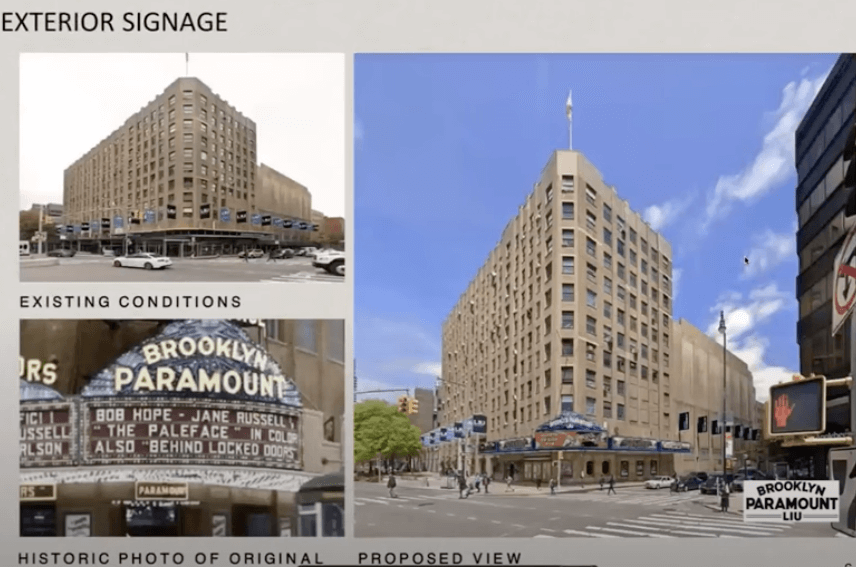A scoop for Brownstoner: the Paramount Theatre at LIU being restored for reopening next year. (And why didn't this news emerge sooner?)
 |
| Screenshot from LiveNation presentation to CB 2 |
There are a lot of images too.
It's worth noting that this impressive restoration plan, spearheaded by Live Nation, has proceeded under the radar, especially compared with the 2015 plan for the Paramount, announced by the then-operator of the Barclays Center, in concert with Long Island University (LIU), which owns the building.
That launched with a groundbreaking ceremony, a press release (with images), and lots of press coverage. In fact, it's still on LIU's web site.
In this case, the principals may be waiting to announce a benchmark, or reopening date, with fanfare and a new web site.
News emerges
Still, the news seeped out.
I was alerted to the renovation plan by journalist Steve Kastenbaum, who tweeted a link to a video proudly produced by the construction company working on the project.
That led me to search my email for any mention by Brooklyn Community Board 2. In fact, a CB 2 committee had in June considered the venue's liquor license. (I should've been reading my email more carefully, since it was on an agenda.)
At that committee meeting, available on YouTube, Live Nation presented an extensive slideshow, so I made screenshots and took notes.
Who's watching?
That meeting was more than a month ago. So this story was there for the taking--if only a journalist had been observing.
Yes, local publications do cover Community Board or subcommittee meetings, but it's impossible to be comprehensive, and meetings that get less preview publicity are less likely to generate coverage.
In a different journalistic ecosystem, publications would have enough money and staff to send reporters to public meetings regularly--not necessarily because each meeting would generate news, but because it was a way to keep up.
The neighborhood-focused website DNAinfo tried to do that during its eight years, but that was financially unsustainable and it closed in 2017.
Since the COVID era, it's actually been easier--albeit different--to cover virtual meetings, since we can watch such meetings at a later time.
But there just aren't enough people to do that, either. For more journalism, we need new funding models.
Comments
Post a Comment